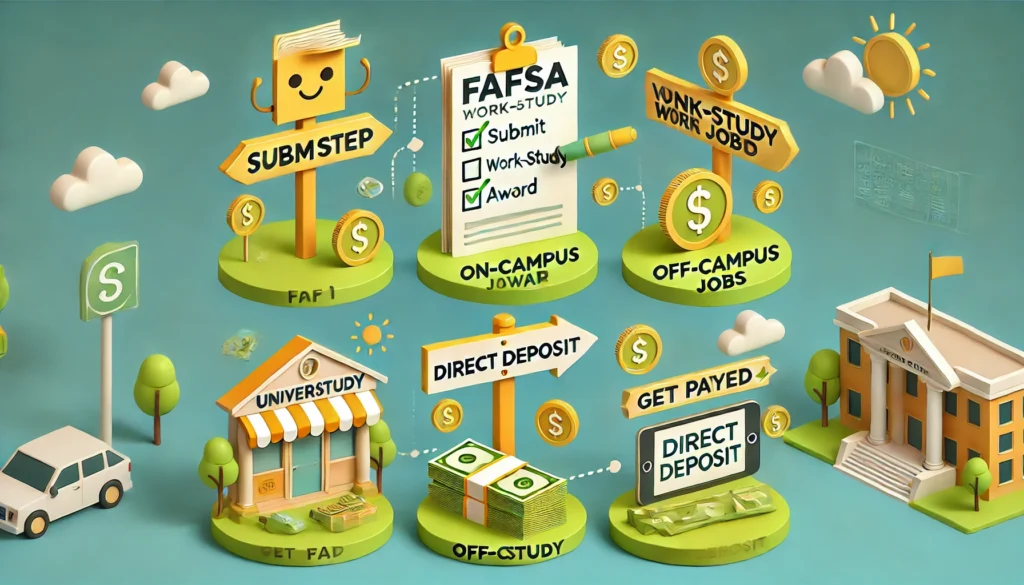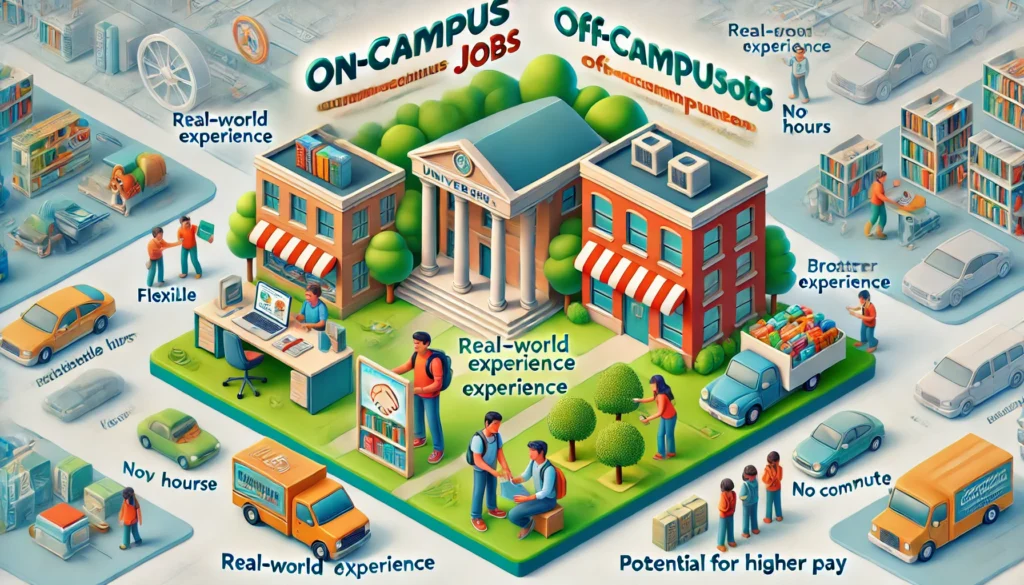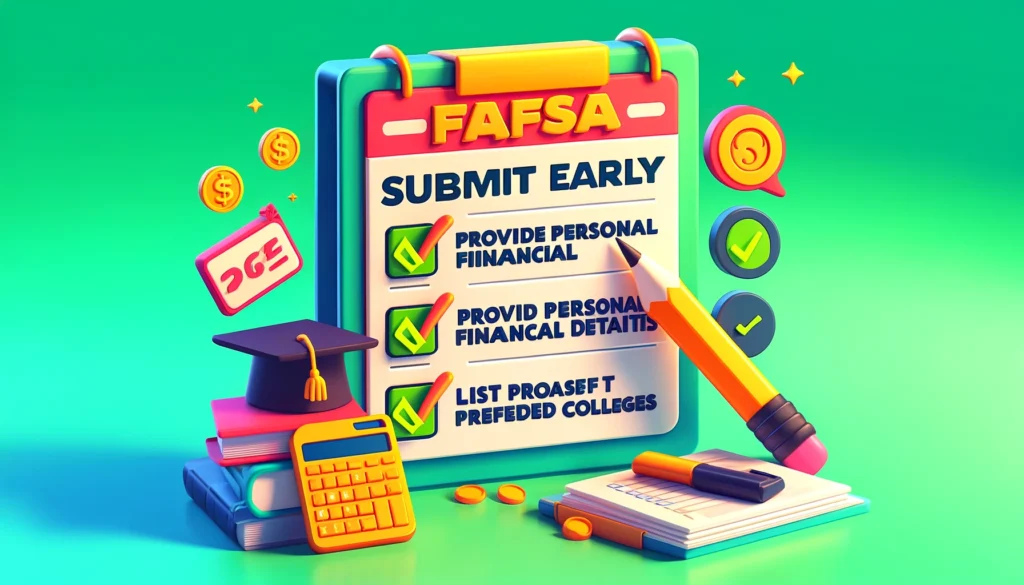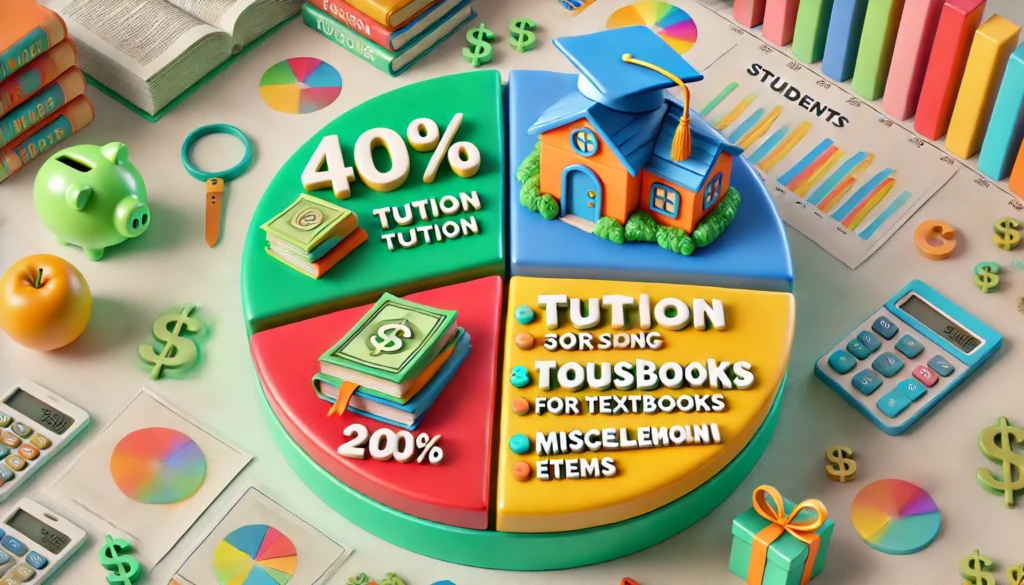Covering college costs can feel overwhelming, but work-study programs offer a way for eligible students to earn money while studying.
Designed as part of federal student aid, these programs provide students with part-time employment opportunities to offset educational expenses without taking on additional debt.
Table of Contents

Here’s a concise table that summarizes the key information for readers who prefer quick insights
| Topic | Summary | Key Points |
|---|---|---|
| What Is Work Study? | Federal aid offering part-time jobs to students with financial need. | Earnings don’t need to be repaid. |
| How It Works | Apply via FAFSA, get work-study award, work on or off campus. | Paid through direct deposit. |
| Eligibility | U.S. citizens or eligible non-citizens with financial need. | Must meet academic progress and FAFSA criteria. |
| How to Apply for Financial Aid | Complete FAFSA early and provide required financial info. | FAFSA opens on October 1st annually. |
| Applying for Work-Study Jobs | Apply early, search jobs through financial aid office. | Pick jobs that match your schedule. |
| Benefits of Work-Study | Flexible hours, builds experience, and reduces student debt. | Does not affect future FAFSA eligibility. |
| On-Campus Jobs | Jobs within school (e.g., library, bookstore). | Convenient and fits with academic schedule. |
| Off-Campus Jobs | Jobs with nonprofits or public agencies. | Real-world experience, community engagement. |
| Work-Study for Non-Residents | Limited eligibility for international students. | On-campus jobs more accessible. |
| Managing Earnings | Funds go toward expenses like books or tuition. | Not counted as income for FAFSA. |
| Work Study vs. Part-Time Jobs | Work-study is more flexible for students. | Regular jobs might impact FAFSA eligibility. |
| Tips for Success | Apply early, maintain academic progress, and explore scholarships. | Review aid packages carefully. |
| Key Takeaways | Reduces loan dependence and offers flexible work hours. | Focuses on both financial and academic success. |
What Is Work Study?
The federal work-study program is a type of financial aid that helps college students with financial need by offering part-time jobs on or off campus.
The work-study award is included as part of a student’s financial aid package. Unlike loans, the money earned through work-study jobs doesn’t have to be repaid, making it an ideal way to fund education expenses.
How Does Federal Work-Study Work?
Students begin by submitting the Free Application for Federal Student Aid (FAFSA) to assess their financial need and determine work-study eligibility.
Once accepted, students receive a work-study award outlining the maximum amount they can earn during the academic year.
- On-Campus Jobs: Typically, students work for school departments such as the library or administrative offices.
- Off-Campus Jobs: These jobs may involve nonprofit organizations or public service roles that align with the student’s field of study.
Students are paid based on the work hours they complete, and the earnings are usually deposited directly into the student’s account via direct deposit.
Because work-study earnings aren’t counted toward the expected family contribution (EFC), they don’t reduce eligibility for other financial aid programs.
Eligibility for Federal Student Aid
To be eligible for federal student aid, students must meet specific requirements that ensure they are prepared and qualified to receive financial assistance.
Firstly, students must be U.S. citizens or eligible non-citizens and possess a valid Social Security number. Enrollment in a degree-granting program at a participating college or university is also necessary.
Maintaining satisfactory academic progress (SAP) is crucial, as it demonstrates a student’s commitment to their education.
Additionally, students must not be in default on a federal student loan or owe a refund on a federal grant.
It’s also important to note that students with felony convictions, particularly those involving the possession or sale of illegal drugs, may face restrictions on their eligibility.
Financial need is a significant factor in determining eligibility for federal student aid.
This need is assessed through the Expected Family Contribution (EFC), which is calculated based on the information provided in the Free Application for Federal Student Aid (FAFSA).
By meeting these criteria, students can access the financial support they need to pursue their educational goals.

How to Apply for Financial Aid
Applying for financial aid begins with completing the FAFSA application online. The application process typically opens on October 1st each year, and it’s crucial to apply as early as possible
Since some types of aid are awarded on a first-come, first-served basis.
When filling out the FAFSA, students will need to provide various personal and financial details. This includes their Social Security number, driver’s license number, W-2 forms, and tax returns.
Information about assets, such as savings and investments, as well as income details like wages and tips, will also be required.
Students must list the colleges or universities they are interested in attending, as the FAFSA will be sent to those schools for review.
By ensuring all information is accurate and complete, students can increase their chances of receiving the financial aid they need.
How to Apply for a Work-Study Job
To participate in the federal work-study program, students should apply early since many jobs are available on a first-come, first-served basis. Here are the steps to secure a work-study position:
- Submit the FAFSA: Indicate interest in work-study opportunities while filling out the application for federal student aid.
- Check Your Financial Aid Office: Once approved, the financial aid office will provide information on available work-study positions.
- Apply for Jobs Matching Your Class Schedule: Search for work-study jobs that fit your class schedules to maintain balance between work and academics.
- Begin Working: After receiving your award amount, you can start working and earning toward your education expenses.
Benefits of the Work-Study Program
There are several advantages of enrolling in the federal work-study program:
- Flexible Work Hours: Jobs are tailored to fit around students’ class schedules, helping them maintain satisfactory academic progress.
- Future Financial Aid Eligibility: Participation in work-study won’t affect future financial aid eligibility since earnings aren’t included in the next year’s FAFSA.
- Practical Job Experience: Many work-study jobs provide skills relevant to students’ fields, adding to their resumes.
- Reduced Student Debt: By earning money during the academic year, students can graduate without relying heavily on loans.
- Community Impact: Off-campus work often involves public service or nonprofit organizations, promoting valuable community engagement.
On-Campus vs. Off-Campus Work-Study Jobs
Work-study jobs are divided into two categories: on-campus and off-campus positions.
Each offers different opportunities and benefits depending on your availability, class schedule, and career interests.
Here’s a breakdown of each option, along with examples of typical roles, rules for non-residents, and working hours.
On-Campus Work-Study Jobs

On-campus jobs are located within the college or university. These roles tend to focus on supporting school operations and student services.
If you’re planning to balance a job with academic goals, consider using our investment tracker apps to manage your finances efficiently throughout the semester.
Since these jobs are often part of the school’s federal work-study program, they offer more flexibility to fit around your class schedules.
Examples of On-Campus Jobs
- Library Assistant: Organizing books, helping students with research, and assisting with library operations.
- Administrative Assistant: Supporting departments such as admissions, career services, or the registrar’s office.
- Tutor or Teaching Assistant: Assisting professors with grading, classroom prep, or tutoring other students.
- Campus Store Associate: Working in the college bookstore or campus merchandise shop.
- IT Help Desk Assistant: Offering tech support to students and staff.
Main Advantages of On-Campus Jobs
- Convenience: No travel required, as jobs are located on campus.
- Academic Integration: Easier to align work hours with your class schedule.
- Networking Opportunities: Build connections with professors and administrative staff.
- Earnings Through Direct Deposit: Many schools offer direct deposit for earnings, making it easy to manage funds.
Working Hours for On-Campus Jobs
- During the Academic Year: Typically 10–20 hours per week.
- During Breaks or Holidays: Some schools allow students to work more hours when classes are not in session.
Off-Campus Work-Study Jobs

Off-campus jobs are typically offered through nonprofit organizations or government agencies that partner with the school.
These roles often involve community service or align with the student’s field of study, such as environmental work or teaching assistance at local schools.
Examples of Off-Campus Jobs
- Community Outreach Assistant: Working with a nonprofit to organize events or fundraisers.
- Research Assistant for a Public Agency: Conducting data analysis or research for local government programs.
- Teacher’s Aide: Assisting teachers in public schools or after-school programs.
- Museum Guide: Leading tours or providing educational support at local museums.
- Environmental Conservation Worker: Helping with public parks and environmental projects.
Main Benefits of Off-Campus Jobs
- Real-World Experience: Gain practical experience in your field of interest.
- Community Impact: Engage with the local community through meaningful work.
- Broader Work Environment: Opportunities to develop skills outside the academic setting.
Working Hours for Off-Campus Jobs
- During the Semester: Students usually work 10–15 hours per week.
- Non-Semester Periods: Depending on the program, students may be allowed to increase work hours during holidays or summer breaks.
Work-Study Rules for International and Non-Resident Students

Non-resident students (such as international students) have different eligibility criteria for work-study programs, depending on the institution and visa restrictions. Here are the key points to consider:
- Eligibility: Most federal work-study programs are restricted to U.S. citizens and permanent residents. However, some schools offer institutional work-study programs that may be available to international students.
- Working Hours: Non-resident students on F-1 visas are generally limited to working part-time (up to 20 hours per week) during the academic year and full-time during school breaks.
- Job Types: Schools may prioritize on-campus jobs for international students to comply with visa regulations. Off-campus employment typically requires additional authorization from the U.S. Citizenship and Immigration Services (USCIS).
Key Differences Between On-Campus and Off-Campus Jobs
| Aspect | On-Campus Jobs | Off-Campus Jobs |
| Location | Within the school campus | With nonprofits or government |
| Convenience | No commute required | May require travel |
| Skill Development | Focus on administrative skills | Real-world, industry-related skills |
| Working Hours | 10–20 hours per week | 10–15 hours per week |
| Job Examples | Library assistant, tutor | Teacher’s aide, conservation worker |
| International Eligibility | More likely | Requires authorization |
By offering both on-campus and off-campus work-study opportunities, schools give students the chance to earn money while also building their resumes.
Whether you choose to work within the school or engage with the community, these jobs help balance education expenses and career development.
Did You Know?

- Work-study funds are not counted as income for FAFSA, protecting your eligibility for other financial aid.
- Some schools allow students to allocate their work-study earnings directly toward tuition, housing, or other education expenses.
- The federal government funds most work-study programs, though some institutions may offer their own student employment opportunities.
Financial Aid Office and Your Work-Study Award

Your school’s financial aid office plays a crucial role in managing your work-study award.
They can provide guidance on available positions and help you navigate the application process.
If you decline or fail to use your full work-study award, you may need to seek other financial aid options to cover remaining education expenses.You can also explore the best investment apps to learn about tools that help you save and invest smartly while studying.
Work-Study Jobs and Student Employment
Participating in work-study programs not only helps with education expenses but also provides meaningful work experience.
Students in FWS jobs (Federal Work-Study jobs) are subject to regulations under the Fair Labor Standards Act, which ensures they receive fair compensation
During breaks, students may increase their work hours to earn more money.
If you want to work beyond your work-study award, additional student employment opportunities are available, such as part-time jobs at local businesses.
However, these positions may not offer the same level of flexibility as work-study jobs designed to fit around class schedules.
Managing Work-Study Earnings

Since work-study earnings are typically deposited through direct deposit, it’s easy to manage and allocate funds for your needs.
Students often use these funds to pay for textbooks, supplies, or other educational expenses. Some students even apply their earnings directly toward tuition payments.
For additional financial flexibility, explore the options in our best money borrowing apps guide, offering quick solutions for managing educational costs.
If your earnings are insufficient to cover your school expenses, you may need to seek other financial aid or take on an additional part-time job.
Work Study vs. Part-Time Employment: Which Is Better?
| Feature | Work-Study Jobs | Regular Part-Time Jobs |
| Earnings Affect FAFSA? | No | Yes |
| Tailored to Class Schedule | Yes | Sometimes |
| Reserved for Students? | Yes, eligible students only | No |
| Community Impact? | Often involves public service | Not always |
Tips for Success

To maximize their chances of receiving financial aid, students should follow several key strategies.
First and foremost, completing the FAFSA as early as possible is essential.
Early application can make a significant difference, especially for aid awarded on a first-come, first-served basis.
Accuracy and completeness are vital when filling out the FAFSA. Any errors or omissions can delay the process or reduce the amount of aid awarded.
Once the financial aid package is received, students should review and understand the types and amounts of aid included.
Maintaining satisfactory academic progress (SAP) is crucial for continued eligibility for financial aid.
Students should also communicate regularly with their financial aid office to stay informed about their aid options and any requirements or deadlines.
Exploring other sources of financial aid, such as scholarships and grants, can supplement federal student aid and reduce the need for loans. Additionally, take a look at our high return small investments guide to discover ways to grow your savings during your academic journey.
By following these tips, students can increase their chances of receiving the financial aid necessary to achieve their higher education goals.
Key Takeaways
- Federal work-study programs allow students with financial need to earn money through part-time employment on or off campus.
- Students apply through the Free Application for Federal Student Aid (FAFSA) and receive a work-study award as part of their financial aid package.
- Work-study jobs are available on a first-come, first-served basis, with flexible hours to fit around class schedules.
- Participation in work-study programs reduces reliance on loans, helping students graduate with less debt.
- Work-study funds do not count toward the expected family contribution (EFC), preserving future financial aid eligibility.
Conclusion
The federal work-study program offers a practical way for college students to manage educational expenses while building valuable skills and avoiding debt.
With flexible work schedules and income that won’t affect future financial aid eligibility, this program helps students focus on both their academic and financial success. For more ways to achieve financial independence, consider starting a side project by reviewing our how to start a side hustle guide.
FAQs
1. Can work-study earnings cover all my education expenses?
Work-study earnings can help with educational expenses, but they may not be enough to cover everything. You might need to supplement them with other financial aid or additional income.
2. How do I know if I qualify for the federal work-study program?
You need to submit the FAFSA to determine work-study eligibility based on your financial need.
3. Can I use my work-study earnings for off-campus housing?
Yes, students can apply work-study funds to a variety of expenses, including rent, tuition, and textbooks.
4. Is it possible to decline my work-study offer?
Yes, if you decline your work-study award, you may need to rely on other financial aid options, such as loans or grants, to cover your expenses.

